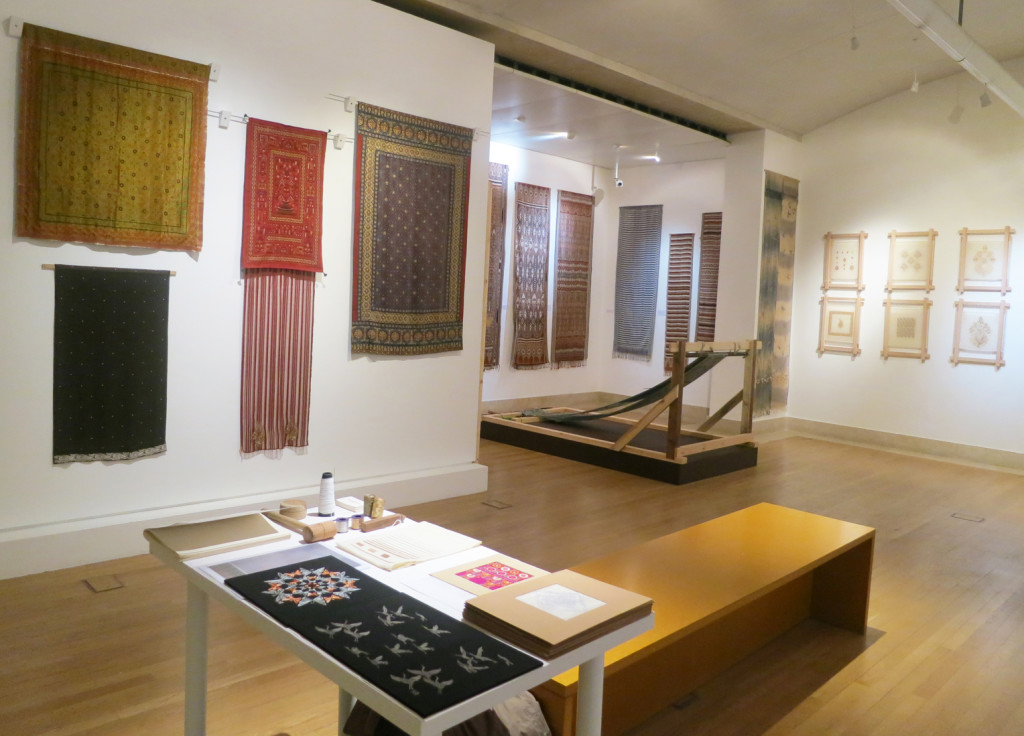
The current exhibition at the Brunei Gallery at SOAS (the School of Oriental and African Studies), is a huge, comprehensive exhibition displaying textiles from various countries all over the world that have a rich tradition in textile making, particularly using natural fibres and dyes. The World Eco-Fiber and Textile Art, aptly abbreviated to WEFT – exhibition covers hand-woven textiles, hand-painted and printed textiles, hand painted/embellished bark, dyed textiles, hand-made felt, hand embroidered textiles, fiber and textile jewellery and ‘contemporary expressions’.
The exhibition was curated by Malaysian architect-designer Edric Ong, president of the Society Atelier Sarawak Malaysia.
It was interesting to see that most individual artists who created the works on display were named on the accompanying description and in the exhibition catalogue. This is because often exhibitions covering a textile tradition usually done by a group, with no particular style prevailing above the others, and therefore individual artists are not known and names not mentioned. In many of these cultures, it is not custom to sign works and they are generally anonymous if ever entering into the public realm. The makers themselves, also would not necessarily have called their work ‘art’ as they were usually made to be used or worn rather than just displayed. However, there are still many artists listed collectively by the organisation or NGO that works with them.
An exception to artists working in a group or community is Asif Shaikh from Ahmedabad, India who came to demonstrate his work in the gallery. He is known worldwide for his ornate, high quality ari embroideries which he taught himself when he was young, rather than learn from a parent, as is the case for many traditional textile practices in India.
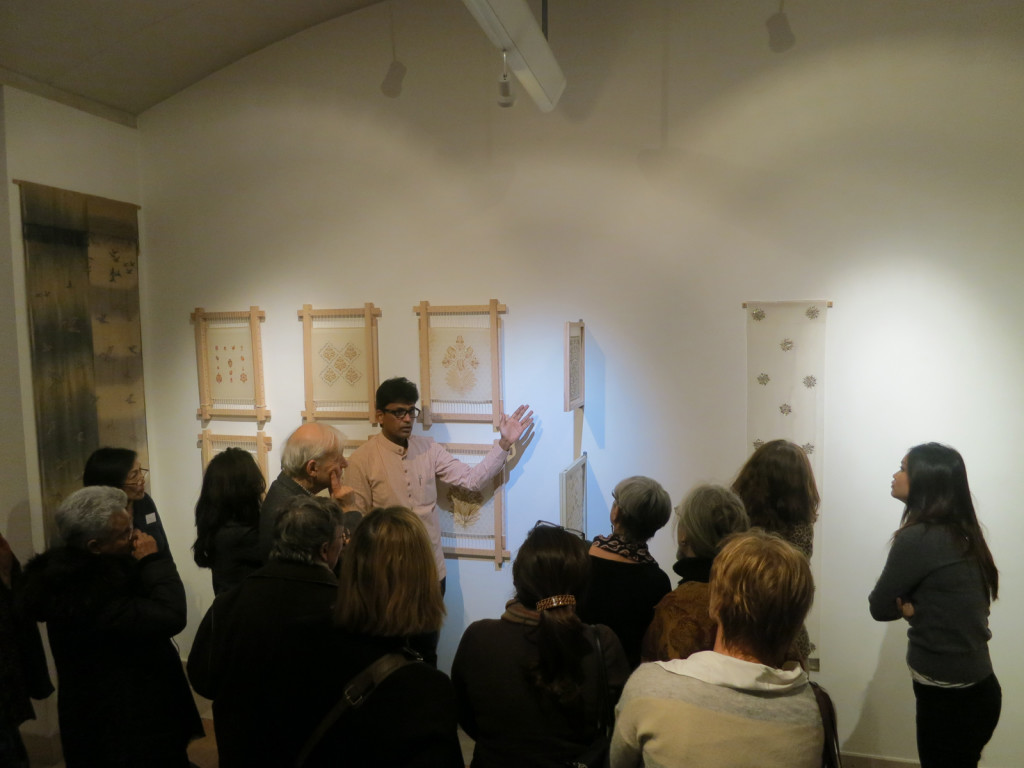
The main style of embroidery Asif is known for, is 18th century ari embroidery that was produced for the royal courts. Asif was chosen to revive this textile tradition by the Victoria and Albert Museum. The name ari relates to the needle used which is much like the tambour hook needle used in Europe, and used to stitch chain stitch by pulling the needle up through a piece of cloth stretched over a wooden frame called the karchob. This embroidery was done by the Mochi embroiderers of Kutch and Saurashtra, who worked for the court and merchant and landowning castes (Gillow and Barnard, Traditional Indian Textiles). It is recognised by its motifs of buttis (Moghul and Persian style floral motifs), peacocks and figures of women. It was produced for garments such as gaghra (skirt), choli (blouse), sari borders, children’s caps and torans (decorative dooorway friezes). It was also used in devotional temple hangings.
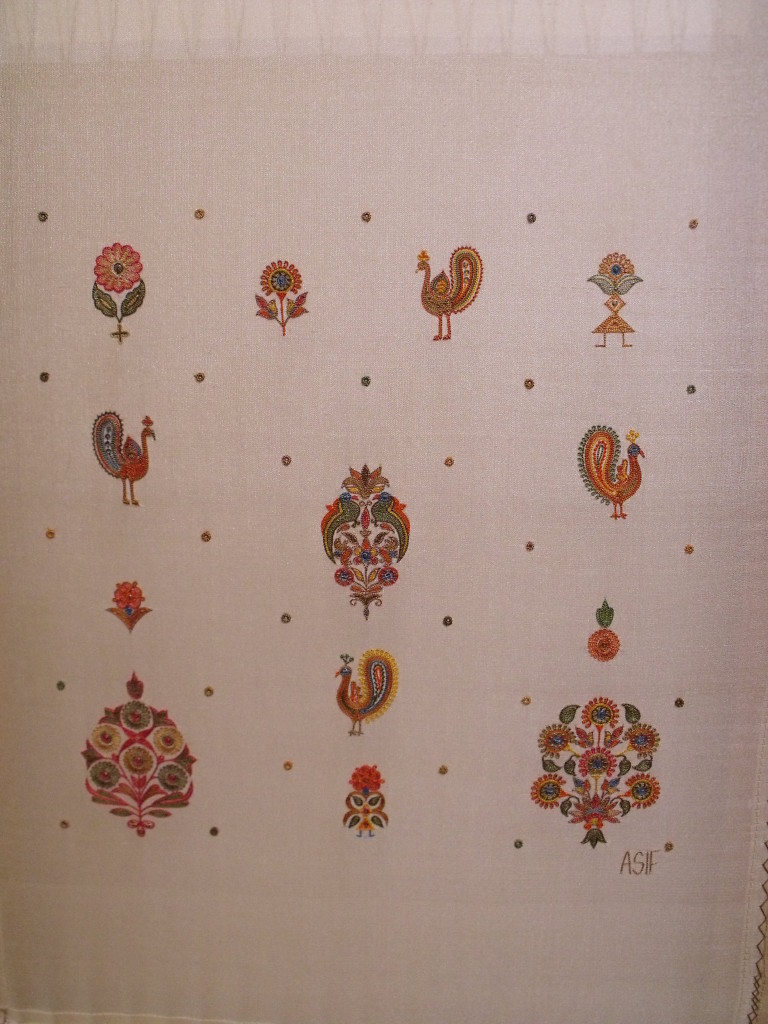
When the courts lost their wealth and powers of patronage running up to independence in 1947, the practice of mochi or ari embroidery was almost extinct.
Asif has also trained in many other Indian embroidery traditions, and the panels on display in the exhibition depict each different style. These include: kamdani, marodi, chikankari, dokh, zardozi vasli and soof. Interestingly, he has also embellished printed and dyed textiles with his embroidery. Examples include shimmering subtle gold chain stitch over ajrakh printed gajji silk. There are two examples of these in the exhibition, one printed by Khatri Abduljabbar Mohammed in Dhamadka and one by Khatri Ismail Mohammed in Ajrakhpur. He has also embellished kalamkari (hand-painted in natural dyes) cloths produced by Niranjan Gurupa Shetty from Hyderabad and bandhani (tie and dye) shawls by Abdul Jhabbar Khatri of Bhuj, Kutch.
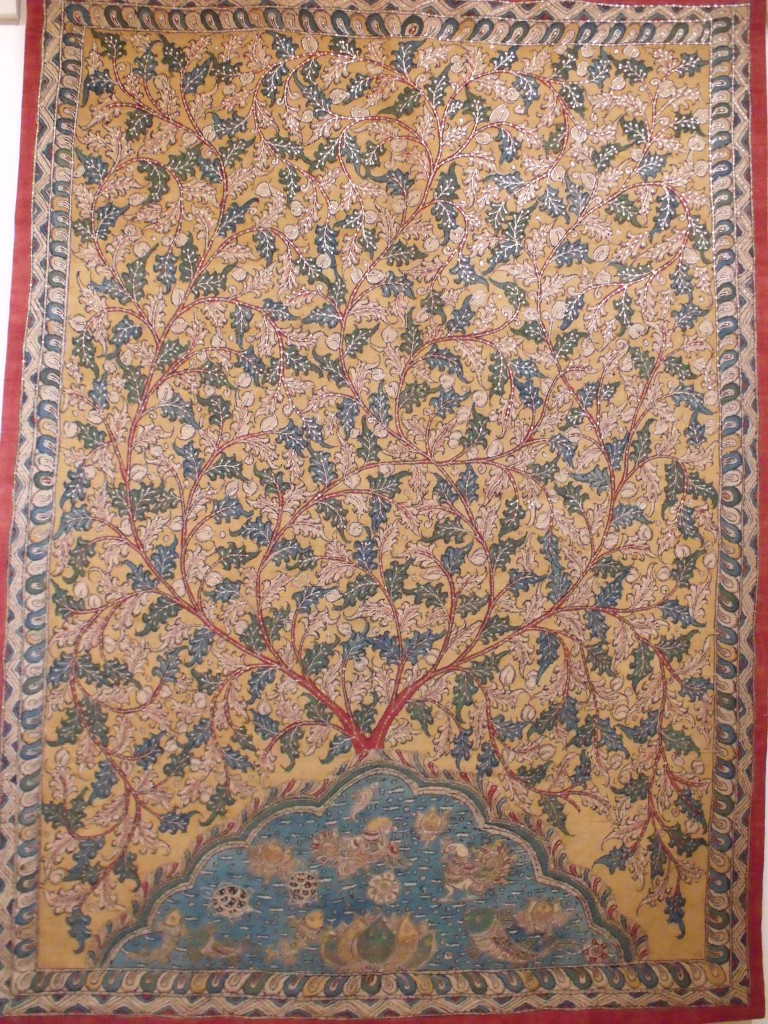
While I loved seeing some Gujarati textiles in the exhibition and getting my fill in the midst of a long time being away from the region, I also loved seeing the Indonesian and Malaysian batik (wax-resist) painting, indigo shibori cloth from Nigeria, indigo batik on handwoven hemp from China, the ikat woven songket textiles of Malaysia, suzani from Uzbekistan, shibori natural dyed silk scarves by Aranya Naturals in Kerala, India. All these struck an urge to travel to these places and discover more about the textiles.
Many of the textiles on display were completely contemporary and not part of an historical tradition, although perhaps using age-old techniques and materials. These include the safflower dyed mulberry paper installation by Kim Ji Hee of Korea and Edric Ong’s “pandanus” jewellery – jewellery made using natural fibres from plants, seeds and animal hair.
The exhibition is interesting and educational for both those new to world textiles, and those specialising in any of these wonderful textile traditions, giving a really comprehensive overview of the different styles and traditions of textile design and making using natural fibres or dyes, all over the world. It will also be hugely inspirational for craftspeople, textile designers, artists and I’m sure many more.
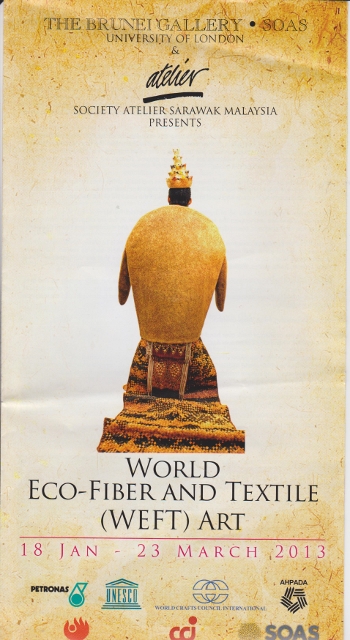
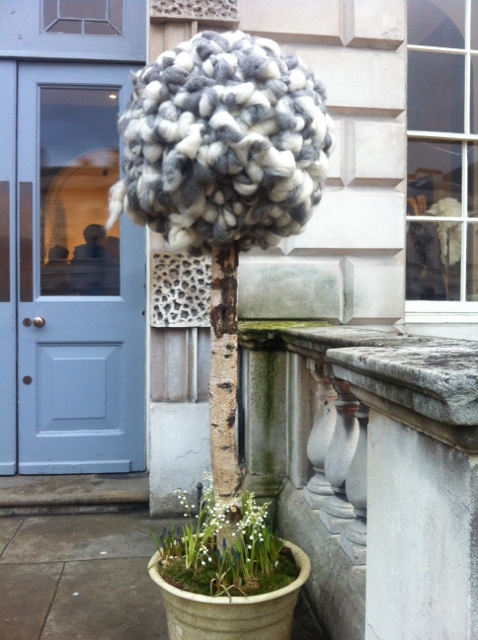
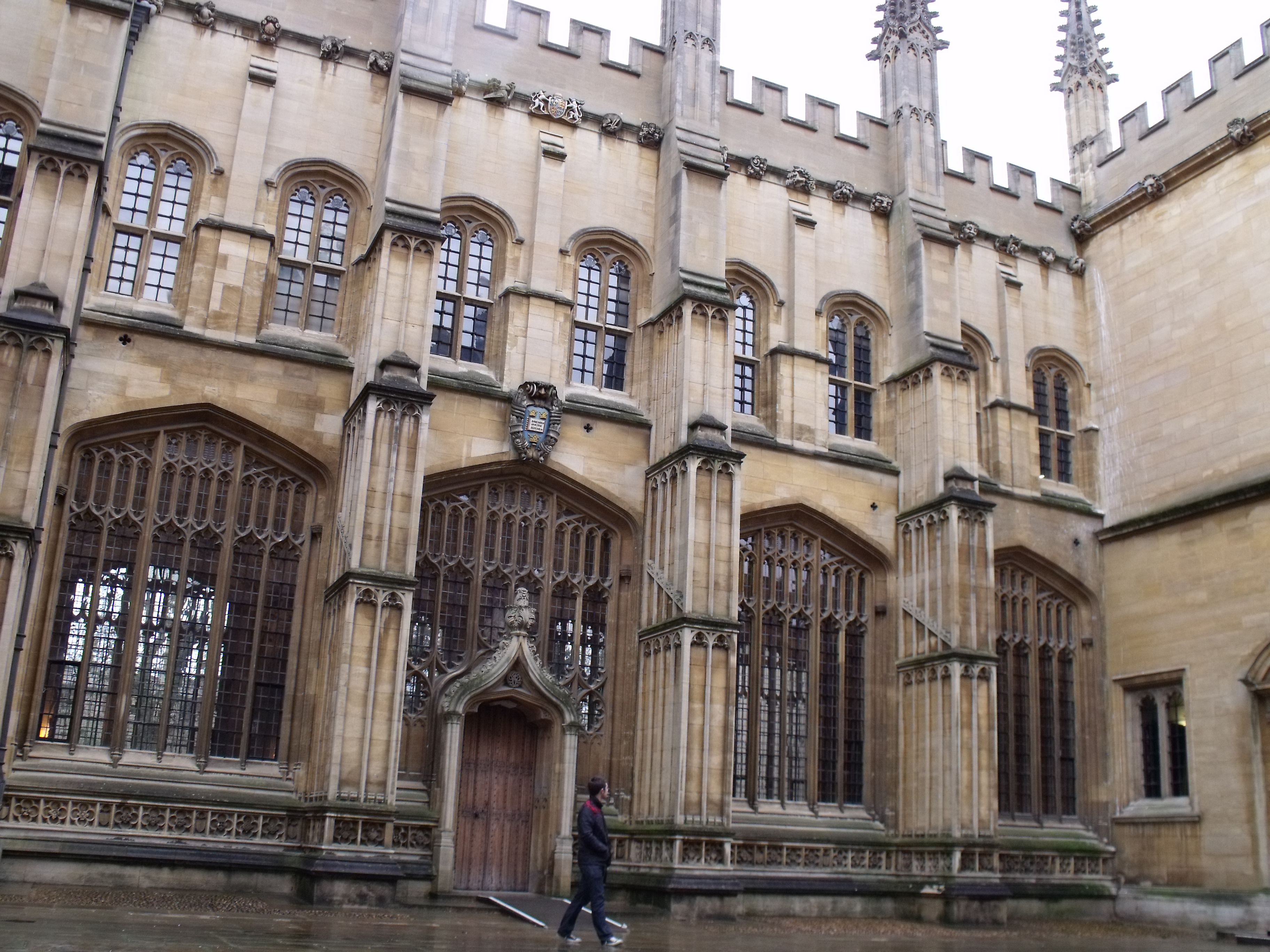
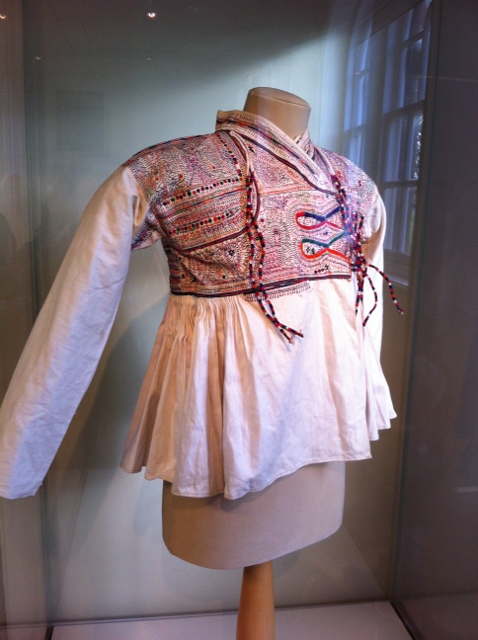


5 Comments
Greg Roberts
Ruth, thanks once again, for your great post about an exhibition I wish I had also seen. The exhibition’s curator Edric Ong, is a wonderful artist who has made an outstanding contribution to the textile arts and fashion, always referencing the rich cultural and textile traditions of Sarawak. A visit to is store in Kuching is a must.
What a beautiful work the Kalamkari panel with Asif’s ari work is.
Thank you, Greg.
Greg Roberts
Ruth, thanks once again, for your great post about an exhibition I wish I had also seen. The exhibition’s curator Edric Ong, is a wonderful artist who has made an outstanding contribution to the textile arts and fashion, always referencing the rich cultural and textile traditions of Sarawak. A visit to is store in Kuching is a must.
I really enjoyed the stunning beauty of the Kalamkari panel with Asif’s ari work. It is also good to know that you are still enjoying Javanese batik!
Thank you, Greg.
om prakash
this kalamkari purchase=om prakash…09213980300..delhi
Pingback:
Pingback: